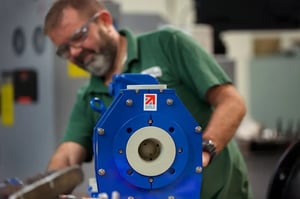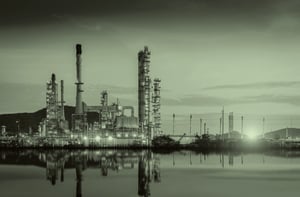
Atex Guide
Explosive Enviroments
Explosive atmospheres can be caused by flammable gases, mists, vapors or by combustible dust. And if there is enough of the substance, mixed with air, then all it needs is a source of ignition to cause an explosion.
Explosions can cause serious injuries as well as significant damage and in some cases fatalities. So preventing the release of dangerous substances are two widely used ways of reducing the risk, as well as using the correct equipment which can greatly help.
The Dangerous Substances and Explosive Atmospheres Regulations 2002 (DSEAR) place duties on employers to eliminate or control the risks from explosive atmospheres in the workplace, and a summary of those requirements can be found here.

What is Atex?
ATEX is the name commonly given to the two European Directives for controlling explosive atmospheres. The first ATEX directive (94/9/EC) deals with the requirement pertaining to equipment used in areas where there is a serious risk of explosion. This means the manufacturer has to fulfill the requirements and mark the product with relevant approval.The second ATEX directive (99/92/EC) deals with the minimum health and safety requirements that the user has to fulfill, when working within areas where there is a danger of explosion.
Crest Pumps Group and ATEX
Our Centrifugal Chemical Pumps have been built to ATEX standard, and all pumps listed below fully meet the criteria of the European Directives:
| Magnetic Drive Pumps | Mechanically Sealed Pumps | Vertical Pumps | Cast Iron Centrifugal Pump |
| AM | PP | SVC | CHC |
| AMX | PPM | SVB | |
| AMXi | EOV | VSL | |
| AMA | SHC | CSS | |
| SHL | PPS |
The Directive covers a surprisingly large range of equipment and industrial applications, and broadly speaking these must comply in the following areas:
Safety equipment and safety systems exposed to explosive gases or dust.
Safety, control and adjustment devices, which ensure a safe operation of production material and control equipment.
Electrical, mechanical, hydraulic and pneumatic equipment including pumps and electric motors.
Companies that produce, use or distribute this kind of equipment must comply with the basic health and safety requirements contained within the ATEX directive.
The ATEX directive does not have retrospective implications, however pre-existing products maybe be subject to analysis, and in the case of defects, (wear etc) the old products must be replaced with equipment that complies with the ATEX information directive, and in addition, products that are specifically made for use in areas with the high explosion risk should only be marketed when they fully comply with the ATEX directive.
The safety requirements within the ATEX directive implies that pumps have to carry a clear indication of which equipment group and category, they belong to, and in what areas they can be used.

THE CREST PUMPS LIFETIME GUARANTEE
No matter how old your pump becomes, in the unlikely scenario that you have a problem, our engineers will be on hand to diagnose the issue and help you get up and running again.That’s why, with Crest Pumps you’ll never need to worry about unplanned downtime again.
Talk to us now to discuss your chemical pump requirements or book a free site audit to see how much time and money you could save!
Trusted By The Best




































